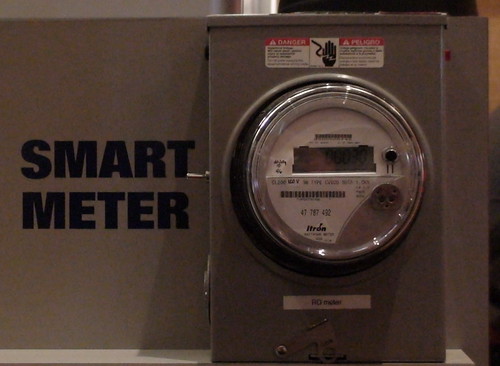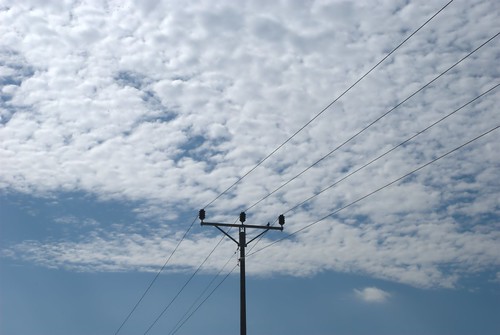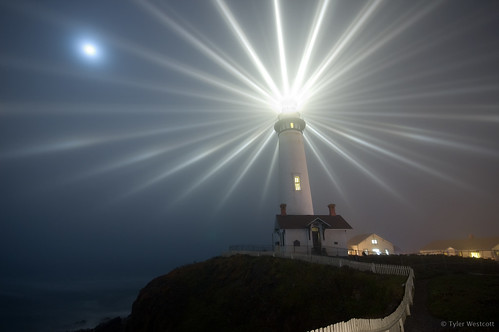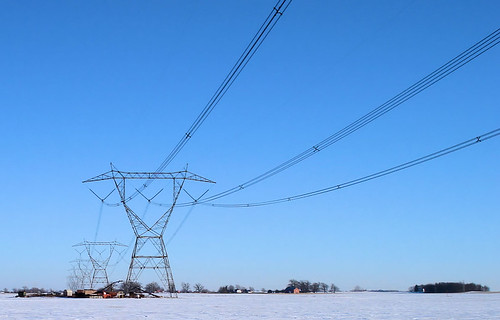I came across this great IBM video yesterday via Andy Stanford-Clark.
The video explains, far better than I could ever do, why Smart Grids are a good idea – and to get full value, you need to watch it until the “Dinosaurs ARE pretty cool” comment!
Green from the roots up, Sustainable from the top down

by Tom Raftery
I came across this great IBM video yesterday via Andy Stanford-Clark.
The video explains, far better than I could ever do, why Smart Grids are a good idea – and to get full value, you need to watch it until the “Dinosaurs ARE pretty cool” comment!

by Tom Raftery

I have been talking to a lot of Smart Meter and utility companies in the last few weeks and it has been fascinating. I have learned a huge amount about some of the challenges and opportunities involved in rolling our Smart Grids.
The first thing to say is that Smart Grids are coming. None of the utilities I have spoken to have given me feedback to indicate that they are rolling back on their Smart Grid projects – and they all have Smart Grid projects at some level, whether it is in planning, in trial or in roll out.
One of the questions I have asked and not received a satisfactory answer to yet is “What happens if I decide to change utility co.? Does my existing utility come along, take the Smart Meter off my wall and my new utility then needs to send an engineer to install their Smart Meter?” Unfortunately, so far the answer to this appears to be “Yes”!
In reality, this will probably be solved with some kind of cost or asset transfer solution.
As an electricity consumer (be that industrial or residential), ideally what I want is either an ‘unlocked’ Smart Meter, or one which is owned by the grid management company, as opposed to one which is locked into a particular utilitity.
In fact, for me the ultimate solution would be a neutral Smart Meter which can go out at all times, find the cheapest electricity at that time and pull from that utility!

by Tom Raftery
One of the more interesting keynote talks at the recent SAP for Utilities conference in San Antonio TX was the one given by Stefan Engelhardt, SAP’s Head of Industry Business Unit Utilities.
In his keynote he discussed decarbonisation and SAP’s vision around Smart Grids and Smart Meters. I asked him if he’d be willing to come on camera to talk about some of these topics and he very graciously agreed.
With the vast majority of the world’s utilities using SAP’s software, they have their fingers firmly on the pulse of this sector. What was pleasantly surprising to me was the amount of interest SAP is seeing from their utility client companies in Smart Grids. As Stefan himself said in the interview:
For the next couple of years we see a clear trend towards the deployment of Smart Metering technology in the Utilities industry… and that means we have to adapt the existing business processes to this new technology
It was also fascinating to hear Stefan’s predictions around how Smart Grids will be rolled out gradually by utilities. Polling of smart meters by utilities will be ramped up bit-by-bit from maybe once a day to once every 10-15 minutes and this will have huge implications for the amount of data utilities will have to manage. Previously they may have collected 1 terabyte every 10 years. With smart meters reporting energy usage every 10-15 minutes they could be collecting 1 terabyte every month, or less!
With the roll-out of Smart Grids, utility companies will be able to publish energy prices in realtime based on supply and demand. This is important because electricity is more plentiful when renewables are contributing to the mix, so cheaper electricity should also track closely with Greener electricity!.
Utilities will now be able to offer new products like critical peak pricing for peak shaving in times of electricity shortage and even demand stimulation, to encourage people to consume electricity when supply is exceeding demand. This will encourage people to shift some of their loads to times when renewables are contributing more, thereby reducing the CO2 emissions associated with that load.
[Disclosure – SAP covered my expenses to attend this conference]

by Tom Raftery
One of the key challenges for any new technology, like Smart Grids, is finding intelligent ways to manage them.
Smart Grids contain new assets for utilities (Smart Meters) which collect data about energy usage and pass it back to the utility. They should also be capable of receiving data from the utility (price signals) and communicating that with the household.
Because this is an extremely immature technology as yet, there are many new entrants in the field with solutions around managing Smart Grids.
At the SAP for Utilities conference, I spoke to Krishna Kumar of Space-Time-Insight and he demonstrated their Smart Grid management software. I was impressed at the way the software used Google Maps and was able to zoom in or out to report at the city/block/individual residence level!
The fact that it also allows for the management of assets like wind turbines makes this an interesting piece of software for utilities, I suspect.

by Tom Raftery
In the above video Eric Schmidt, Chairman and CEO, Google interviews Jeffrey Immelt, Chairman and CEO, GE.
The reason Google and GE were talking? Google and GE jointly announced the other day that they are coming together “to help develop tomorrow’s power generation, transmission and distribution — known as the “smart grid” — and its interface with next generation electric transportation”.
From the release:
The existing U.S. infrastructure has not kept pace with the digital economy and the hundreds of technology opportunities that are ready for market. In fact, the way we generate and distribute electricity today is essentially the same as when Thomas Edison built the first power plant well over one hundred years ago. Americans should have the choice to drive more fuel efficient cars – or even electric cars – and manage their home energy use to reduce costs, and buy power from cleaner sources, or even generate their own power for sale to the grid.
We all receive an electricity bill once a month that encourages little except prompt payment. What if, instead, we had access to real-time information about home energy use? What if our flat screen TVs, electronic equipment, lights and appliances were programmed to automatically adjust to save money and cut energy use? What if we could push a button and switch the source of our homes’ electricity from fossil fuels to renewable energy? What if the car sitting in our garage ran on electricity – the equivalent of $1 per gallon gasoline – and was programmed to charge at night when electricity is cheapest?
This is spectacular news! GE are the largest player in the power industry in the US. Their product line covers every aspect of power generation, transmission, distribution and consumption. And GE have an enviable record in renewables. They are the largest manufacturer of wind turbines globally having purchased Enron’s wind business out of bankruptcy for $300m and turned that into an asset generating between $7-$8bn in 2008!
Google get Demand Response. Coming from an Internet background as they do, they know all about the read/write web, p2p and publish and subscribe mechanisms – these are going to be the cornerstone of Electricity 2.0 as espoused by Eric Schmidt and Google in their release, and by me as I write about them regularly on this blog!
In fact, I am giving a talk at the Web 2.0 Expo in Berlin on Oct 23rd entitled “Electricity 2.0 – Using The Lessons Of the Web To Improve Our Energy Networks” – this builds on the Keynote I gave there last year on using demand response to reduce our carbon footprint.

by Tom Raftery

Photo Credit ogimogi
Episode 3 of the GreenMonk Podcasts – 42 mins 47 secs
My guest on this podcast is President, Chief Executive Officer, and Founder of Trilliant Bill Vogel. Trilliant are a company that
provides intelligent network solutions and software to utilities for advanced metering, demand response, and smart grid management. With more than twenty years experience solving meter communications needs, Trilliant focuses on the adoption of open standards-based technologies for electric, gas, and water utilities.
And Trilliant recently announced that it had closed a $40m funding round so I was interested to know how Bill felt smart grids could help reduce carbon footprints. I invited him to come on the show to discuss this and also to answer questions I solicited from readers of this site.
Here are the questions I asked Bill and the approx. times I asked them:
For anyone who is not sure what a Smart Grid is, can you give us a quick Smart Grid 101? – 0:18
How does that differ from the current grid infrastructure that we have? – 01:12
How does that work? – 02:22
And why would that be of benefit to consumers? – 03:48
Questions from readers:
Asa Hopkins
In the Trilliant vision of the future, what level of access will an individual consumer have to their own energy data, and with what time resolution? Will they be able to export raw data? Manipulate it through Trilliant software? Compare with neighbors? In the future will there be an open ecosystem of tools to allow individuals to learn more about their energy use and make their own efficiency gains? – 06:05
Are there intelligent enough systems right now to allow your smart meter communicate with your appliances, change your thermostat settings up or down based on energy pricing, that kind of thing, is that a reality yet or is that still a bit of a pipe dream? – 09:22
More questions from readers:
Jerry Sweeney
Trilliant sees its customers as large utility companies. Does Bill see any path where electrical grids could become more democratised. Where dynamic pricing could facilitate the sale and purchase of electricity by small consumers and producers depending on the current real time price. This could lead to huge growth in the production of distributed renewable energy and to the growth in demand response to pricing signals that suggested scarcity or abundance. How can the grid become more like eBay given the stranglehold that TSOs and Utility companies have over it. – 10:21
Are any of the utilities thinking of Demand Response in respect to demand stimulation and not just the traditional peak shaving? – 16:34
Still more questions from readers(!):
Andy
-Is there any evidence that information on its own is enough to change consumption? – 18:43
– Is multi-utility metering a real prospect/ has this been done by you? – 20:29
– Is there added value in a ‘Utility Data Channel’ that could be used for Security Systems, Water/Gas/BioHeat/Oil/Sub metering/ equipment control? – 21:47
– Is there interest in Smart Grids from makers of Electric Heating, Micro CHP, and Energy Storage Technologies? – 23:18
– Has electric heating been integrated with the operation of smart grids before? – 24:46
– Can such systems be modular and expandible? – 25:13
– Can open standards have a role in maintaining the long term value of smart metering infrastructure? – 26:00
– How can smart metering support markets in carbon reduction? – 27:45
– What happens if we do not do a form of advanced smart metering in Ireland, what is a worst case? – 29:39
– If Ireland is pioneering high levels of grid wind penetration, which other countries may follow? – 31:26
– How may energy prices impact on your business, is your technology a hedge against rising prices? – 32:28Mr Energy Rating
What is Trilliant’s definition of the minimum functionality required for a meter to become a smart meter? – 34:07How fat do the data pipes need to be between smart meters to have a real smart-grid? – 36:47
How do you overcome consumer rejection of Demand Response and avoid the situation in California where a major DR program had to be shelved because of a consumer backlash? – 38:35
You are heavily involved in the HydroOne project in Ontario – what have you learned from such a big project? – 39:50
Final question – you recently announced that you closed a $40m round of funding – what are you going to do with $40m? – 41:28
Download the entire interview here
(39.2mb mp3)

by Tom Raftery

Photo Credit e-magic
Trilliant, are a Smart Network infrastructure provider who
provides intelligent network solutions and software to utilities for advanced metering, demand response, and smart grid management
Last week they announced that they had
closed a $40 million equity investment from an affiliate of MissionPoint Capital Partners and zouk ventures
Next Tuesday, Sept 2nd, I will be interviewing Bill Vogel, Trilliant’s President, Chief Executive Officer and Founder, for a podcast to be published here later in the week.
In the interview, amongst other things, we will be discussing what smart networks and smart grids are, and why they are such a good thing for the consumer as well as the utilities. We will be discussing the $40 million investment and where that money will be deployed and we will also talk about the Hydro One Smart Grid project (28kb pdf), a project to deploy 1.4m smart meters throughout Ontario.
If you have any questions you’d like me to ask Bill during the interview, please feel free to leave them here in the comments of this post (or email them to [email protected]) and I’ll ask them for you during the podcast.

by Tom Raftery

The observant amongst you may have noticed that we have talked quite a bit about smart grids here on GreenMonk. That is because we believe fundamentally in what it is they are trying to achieve and how they are going about it.
And we are not alone in that!
SAP’s AMI Lighthouse Council is all about Smart Grids and hence SAP are holding their SAP for Utilities conference in San Antonio Texas in October where there will be a major focus on Smart Grids.
As well as SAP, not surprisingly the utilities are all over this space because Smart Grids will give them the ability to far better manage their energy supply and the demand, thereby reducing the number of outages. It seems that every day brings news of a new Smart Grid trial by some utility.
ComEd are looking at Smart Grids in Chicago, Manitoba Hydro is testing about 4,500 smart meters in Winnipeg, Xcel Energy has announced plans to make Boulder the first SmartGridCityTM, PEPCO has rolled out a Smart Grid trial in 1,000 homes in Washington DC, Austin Energy plans to have all its meters converted to Smart Meters by December 2008, etc. In fact, here is a Google Map of all the Smart Grid projects currently underway globally!
As well as the utilities, because this is a whole new area, there are literally hundreds of startups in this space from the likes of SynergyModule in Ireland to more established names like Echelon and Itron in the US.
Because of the involvement of these myriad players, IBM has also come on board to try to bring some standards to the table. According to this recent article in CNet,
The idea is to create a common set of communication protocols and data formats that utilities and smart-grid start-ups can adhere to.
With these technical blueprints, based on standards like TCP/IP, new technologies can be plugged into the grid on a large scale…. What’s happening now is a patchwork of smart-grid trials using differing products, an approach that prevents fast technology change.
This is great news for the rollout of Smart Grids globally. If we have a universally agreed set of standards that everyone adheres to then the creation and integration of smart grids and smart grid devices suddenly becomes far less complex.
It will still take some time before there are the devices in place, and the regulators and utilities sign-up to convert completely to Smart Grids but a heavy weight like IBM’s coming on board can only help move things along.
[Full disclosure: SAP have invited me to attend the SAP for Utilities conference, I am a sometime unpaid advisor to SynergyModule and IBM are a RedMonk client, though not a GreenMonk client!]
Photo Credit MumbleyJoe

by Tom Raftery

Photo Credit geognerd
Having just taken delivery today of my Toyota Prius and having just read the Rocky Mountain Institute’s (RMI) fabulous report on Vehicle to Grid possibilities, I decided it was time to address a post to this topic.
First off, what is vehicle to grid? Vehicle to Grid (or V2G) is the idea that plug-in hybrid vehicles (PHEVs) could be used to help stabilise electrical grids by consuming power when there is an excess of electricity, and selling electricity back to the grid when electricity is scarce.
The supply of electricity is variable. All the moreso as the concentration of renewable sources added to grid increases. When this variability of supply is combined with the constant variability of demand the result is an extremely unstable grid and the occasional resultant power outage. This instability increases with the addition of more renewable sources (wind and solar).
Early on summer mornings (2am to 6am) is the typical trough of demand for electricity. As more and more wind farms are added to the grid, if there is a steady wind blowing at this time, there is a very real possibility that the amount of energy being supplied by wind farms will exceed the demand! With an excess of demand over supply the price for electricity will go extremely low or even negative to stimulate demand. At this time, if there are a large number of PHEVs connected to the grid, they can pull down the excess power and store it. In other words, they start to act like a giant distributed battery bank for the country.
The following day, if there is little wind and the temperature is high (not unusual in summer) the supply of electricity will be low and the demand for power will be high as people turn on their air conditioning units. With low supply and high demand, electricity will now be quite expensive. At this time, it would make economic sense for PHEV owners to sell the electricity stored in their vehicles back to the grid.
Furthermore, as the RMI report put it:
Utilities sell a disproportional amount of their power on hot summer afternoons. At night, business plummets. For the utility, that means their expensive generation and transmission equipment stands idle. “Night-charging” vehicles, therefore, could be a lucrative twist on the business of selling electrons.
The National Renewable Energy Laboratory recently estimated that if half the nation’s light vehicles were ordinary plug-in hybrids they would represent a night-charging market of 230 gigawatts. That’s good news for the U.S. wind industry. In many areas, wind tends to blow harder at night, creating more energy when the vehicles would be charging.
All this requires the implementation of smart grids by utilities. These grids will be able to signal the cost of electricity (reflecting the supply and demand) in real-time and devices (vehicles, air-conditioning units, diesel generators, refrigeration plants) will respond to the price fluctuations accordingly so that when electricity is expensive, the demand will drop and supply will be stimulated to increase.
Smart grid trials are already taking place with Enel in Italy having rolled out a smart grid to 27.2m Italian residences! In the US, Austin Energy has been working on building its smart grid since 2003 while Xcel Energy announced its plans to build the first fully integrated “Smart Grid City” in the nation in Boulder, Colorado.
To get this vision to become a reality, consumers will have to be incentivised to buy PHEVs. This might be done by governments, or by utilities who contract with the vehicle owner to subsidise the price of the car, for the use of the battery when needed!
Governments could help push this forward by mandating that all government owned vehicles be PHEVs (though the police might want a derogation until there are high performance PHEVs!).
Car manufacturers also need to produce PHEVs! Toyota will bring the first plug-in Prius to market in 2009 and Renault Nissan have committed to producing electric vehicles for Israel and Denmark. With oil now at $140 per barrel and not looking likely to drop significantly in the coming years, the number of people looking to buy PHEVs will only trend upwards.
Then there are the environmental benefits of large fleets of cars not emitting CO2 for large portions of their journeys. And the resultant grid stability would enable greater penetration of wind power, producing (typically) more power overnight, just when PHEVs would normally be recharging.
What about you? If you could by a plug-in hybrid which would help stabilise the grid, increase the penetration of renewables, and allow you to sell power back to the grid, would you?

by Tom Raftery

Photo Credit Bob Fornal
So, Nick Carr writes regularly about cloud computing and how the Internet is heading more and more towards the same model as the utilities. And he’s right. And this is a good thing.
Now let’s turn that on its head.
When will the utilities start to become more like the Internet? Specifically, when will disparate, disconnected electrical grids join up to give us one global electricity super-grid?
Can you imagine the resilience of a massively connected super-grid? One which can route around problems.
Then think about how much more stable the super-grid would be if the excess energy produced by, for instance, Scandanavian wind farms on windy nights could simply be sold to meet capacity shortages in the US as people arrive home from work, or in Japan as they start to wake up.
What if the grid were smart, publishing prices in real-time, based on supply and demand fluctuations?
And further, what if smart meters in homes and businesses could adjust appliances based on the real-time pricing (thermostats up/down, devices on/off, etc.)?
And what if, again like the Internet, the super-grid were read/write i.e. if you could be a producer as well as a consumer? Think plug-in hybrid vehicles, for example. In times of more abundant electrical supply when energy is cheap or negatively priced (sun shining on Spanish PhotoVoltaic arrays and/or wind blowing on Northern European wind farms), plug-in hybrids could suck in electricity and act as a distributed electrical storage mechanism. Several hours later, if the wind dies down, or the sun sets electricity prices jump and the smart meters realise it is now financially advantageous for plug-in hybrids to sell electricity back to the grid. So they do.
What if most of the technologies to make this happen already existed? How long will it be before the utilities embrace the Internet model in the same way the Internet is jumping on the utility model?
UPDATE: Simon Wardley writes that:
According to wikipedia, “the concept of an interconnected global grid linked to renewable resources was first suggested by Buckminster Fuller” in the 1970s.
There are even organisations such as the Global Energy Network Institute (GENI) who apparently have been working on the “viability of the interconnection of electric power networks between nations”.
This subject deserves a higher profile.
It seems I am in august company!